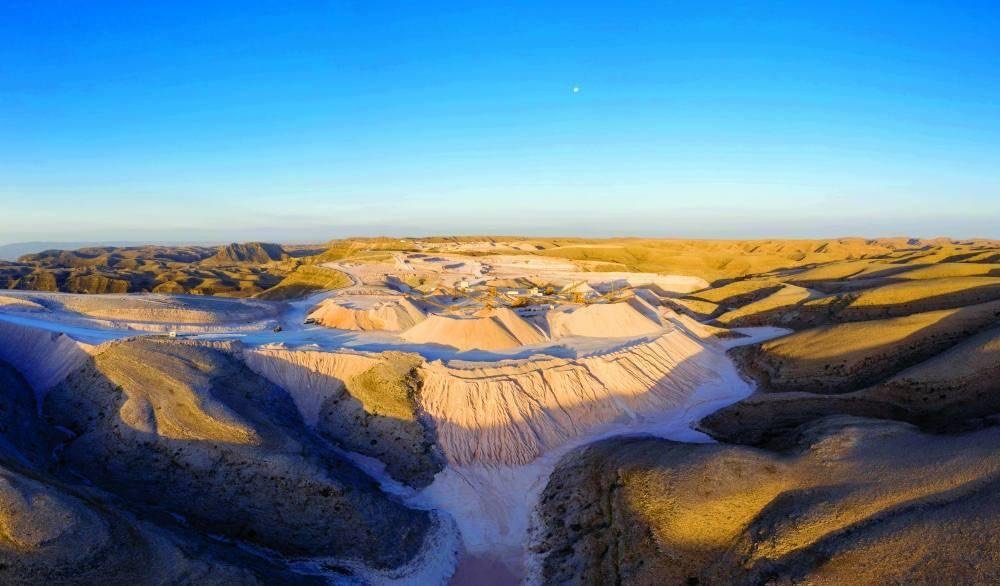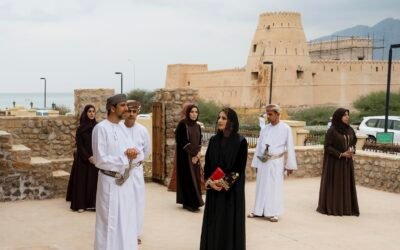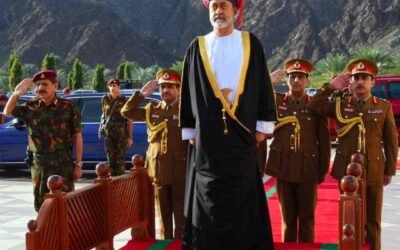Oman’s Copper Mining History
Oman has a rich and ancient history of copper mining and smelting that dates back to the third millennium BC. The abundance of copper ore in its mountains made it a prominent player in the trade of this valuable metal, which was referred to as Magan (the land of copper) in Sumerian tablets.
Early Mining Techniques
Omani miners utilized metal chisels to break rocks and expose copper veins. Notable finds, such as pointed copper chisels from the Al-Maysar settlement in Wadi Samad al-Shan, date back to the third millennium BC. The process of extracting copper involved smelting the ore in clay furnaces. Copper ore would be crushed, mixed with charcoal, and heated to 1150 degrees Celsius. This method transformed the ore into copper, which was then cooled in flat sand pits, resulting in circular discs of copper alloy.
Archaeological Discoveries
Copper waste (slag) led to the identification of some of the richest copper settlements in Oman, including Al-Maysar, along with mining sites along Wadi al-Jazi, such as Al-Aseel and Arja. Historical records indicate that in around 1800 BC, twenty tons of copper were shipped from Magan (Oman) to Ur (Iraq). Key mining areas were concentrated in Wadi al-Jazi in Sohar and the interior and eastern regions of Oman.
Notable Archaeological Sites
The Al-Madam archaeological site in the Al-Amarat region of Muscat is one of the most significant discoveries of 2021. Likely dating back to the late Islamic period of the 16th century AD, the site features copper slag and the foundations of what appear to be residential buildings and copper smelting furnaces. Four caves at the site contain production quarries that expanded due to the extraction of copper ore.
Additionally, the Khiran site in Muscat revealed drawings indicating tools and methods for self-defense, while the Al-Ghubayrat site uncovered rock engravings of animals like horses and camels, suggesting it served as a trade caravan passage. In Wadi Adi, rock engravings depicted extinct predatory animals, and in the village of Sini in Rustaq, a rock with inscriptions believed to be Thamudic script was found.
The Role of Copper Trade in Oman’s Historical Development
Oman has been engaged in copper trade for over five thousand years. Archaeological evidence indicates that ships from Magan (Oman) and Dilmun (Bahrain) docked in Ur loaded with copper and gemstones, which were exchanged for silver, oils, grains, textiles, and leather goods. The thriving copper production in Oman fostered connections with other nations, significantly impacting societal structures and the development of craftsmanship, particularly in architecture.
The historical significance of copper mining in Oman is evident through its archaeological sites and the trade networks it established. The discoveries of ancient tombs and mining techniques underscore the integral role copper played in the life and economy of ancient Oman, reflecting a civilization that was both innovative and interconnected with the broader world.
Source: ONA, Ministry of Information




